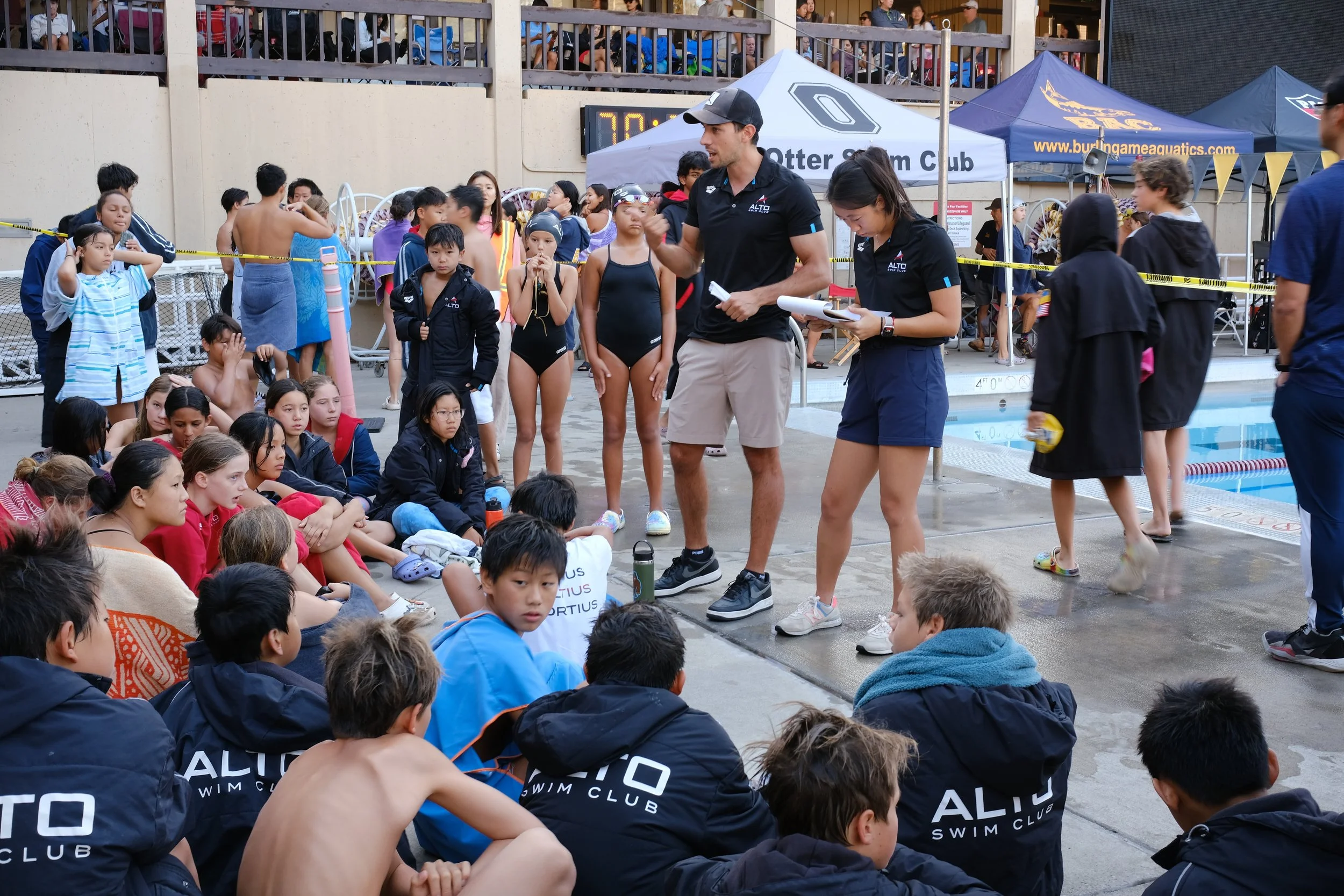Why Learning Looks Messy: Understanding Your Swimmer’s Progress
It’s a common experience for new swim parents: their swimmer is showing up to practices and meets, but the progress isn’t immediately visible.
Parents sometimes ask questions like "My swimmer told me they worked on their breaststroke kick all week at practice, why did it fall apart at the meet?”
Great question! Skill development doesn’t follow a straight line, and sometimes progress can look messy before it becomes consistent. That’s normal and expected in any learning environment, and swimming is no exception.
Before we dive in, here’s an important takeaway for parents: Consistent practice attendance is the #1 driver of long-term progress. Repetition in a structured learning environment is what builds durable skills. Parents, help get your swimmer to workout as consistently as possible!
Here’s why learning looks messy, especially at the age group level:
1. Performance in Practice ≠ Permanent Learning
Swimmer performance while being taught is a poor indicator of mastery! This applies to anyone who is demonstrating a relatively new skill in a teaching environment. In practice, swimmers succeed because they are:
Being guided by a coach
In a repetitive, predictable environment
Moving at controlled speeds
This stage is essential, we need it to start to lay a foundation, but it’s just the beginning. True mastery requires many exposures over time until a swimmer can perform a skill independently, under pressure, and in different situations. Repetition is the key. And that is why consistent attendance matters so much in skill acquisition.
2. Forgetting Is Part of the Process
Brains are designed to forget things that don’t seem important. To address this, coaches use “retrieval practice” asking swimmers to recall skills after time has passed. Each time they “bring it back,” the skill becomes stronger and more automatic. Our goal is to move from “I got it right once” to “I can’t get it wrong.”
3. How Variety Builds Mastery
Repetition is helpful, but variety is where real learning sticks. Coaches mix up how and when a skill is practiced. Competition days are a key part of how we help strengthening learning because the environment is unpredictable and challenges swimmers to recall skills under pressure and at speed.
Blocked Practice: Focused time on a deep dive into a single skill (example, 45 minutes working on breaststroke with drills lead by the coach)
Serial Practice: Recall a sequence in the order it was originally presented, with some cuing and guidance (20 x 25 breaststroke kick, rotating through 4 key drills)
Random / Variable Practice: The same skill shows up at surprising times, in different sets or speeds. This challenges swimmers to build fast, automatic recall of skills under different conditions so the skill really sticks.
Random / Variable skill recall is harder and messier, and it’s the final stage of learning and mastery! We have to start with learning in a block / serial format, but we should spend the most time practicing under random / variable conditions.
4. Performance Can Swing Up and Down
Meet results are influenced by many factors, nerves, fatigue, environment, and simple randomness. Early on, performance might go up and down as swimmers learn to execute skills under pressure, and for an experienced coach that is not surprising at all! We are watching for long-term trends, not just one race or one meet. If the skills keep getting better in practice, meet performance will follow, just not always right away.
5. What Parents Should Do
Parents play a big role in supporting the stages of learning by staying patient and positive. We work hard to normalize mistakes as part of the learning process. Mistakes are not failures, they’re feedback.
When swimmers worry about disappointing someone or getting in trouble for making errors, their focus shifts from learning to fear. Instead of thinking, adjusting, and improving, they become tense and hesitant. The best way to help your swimmer grow is to create a safe environment for trying, messing up, and trying again. That’s how real progress happens.
Also keep in mind, kids want to please and are always looking for parent and coach praise and approval. Without even realizing it, they may start attaching your reactions to their results. A swimmer might think, “My mom gets upset when I add time,” even if you’ve never said anything like that. They may simply be reading tone, body language, or emotional energy.
You can prevent that by sending clear, supportive messages that separate love from performance. Use simple, process-focused encouragement like:
“I love watching you swim.”
“I’m proud of how hard you’re working.”
“I can see your focus, checking in with your coach after every race shows you’re locked in!”
“I love your effort today.”
These kinds of comments support confidence, ownership, and long-term motivation, without adding pressure or judgment about times.
Bottom Line:
Learning to swim fast isn’t just about doing it right once, it’s about doing it right under every condition: tired, nervous, in a crowded lane, or in the championship final. The path isn’t straight, but with consistent practice and support, your swimmer is building skills that will go the distance!




